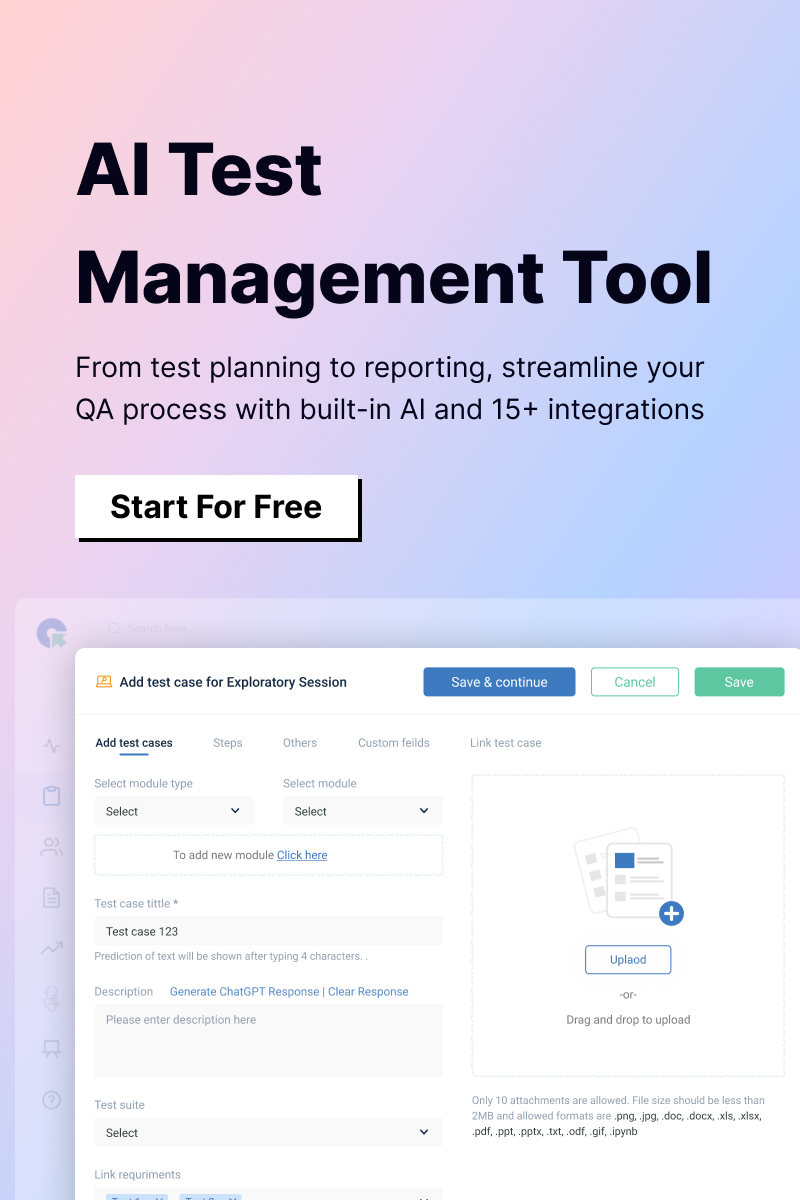To use DevOps for testing, integrate testing into the development and operations processes for faster and more reliable software delivery. Here’s how DevOps can be effectively used for testing:
- Shift-Left Testing: Start testing early in the development lifecycle.
- Continuous Testing: Integrate automated testing (unit, functional, regression) into CI/CD pipelines.
- Automation: Prioritize automating repetitive test cases using tools such as Selenium or Cypress.
- Test Environments via IaC: Use Terraform or CloudFormation to create consistent, scalable environments.
- Parallel Testing: Run test suites simultaneously using containers such as Docker or Kubernetes.
- Collaboration: Ensure communication between developers, testers, and operations teams.
- Continuous Monitoring: Collect performance and reliability data in real time with tools such as Prometheus.
- Test Metrics: Track key metrics (e.g., test coverage, defect rates) and automate reporting.
- Chaos Testing: Test system resilience under failures with tools such as Gremlin or Chaos Monkey.
- Cloud-Based Testing: Use platforms such as BrowserStack for scalable, cross-platform testing.
- DevSecOps: Integrate security testing (SAST, DAST) into CI/CD workflows.
Is DevOps useful for testers?
DevOps is highly useful for testers as it integrates testing into the development lifecycle, enabling early defect detection, continuous testing, and automation. It helps testers collaborate better with teams, work with dynamic environments, and enhance their skills in areas such as CI/CD, automation, and performance testing.
What are the 8 phases of DevOps?
The 8 phases of DevOps represent a continuous cycle of development, integration, testing, and deployment to deliver high-quality software efficiently. These phases are:
- Plan: Define project goals, features, and requirements collaboratively with teams.
- Develop: Write and build code using version control systems such as Git.
- Build: Compile code into executable artifacts and resolve dependencies.
- Test: Conduct automated and manual testing (functional, performance, security) to identify defects.
- Release: Package and prepare the application for deployment.
- Deploy: Automate deployment to production environments with tools such as Kubernetes or Jenkins.
- Operate: Monitor and maintain system performance for reliability and scalability.
- Monitor: Continuously gather feedback and insights through tools such as Prometheus or New Relic to improve the system and plan the next iteration.
Is DevOps the same as testing?
DevOps is not the same as testing, but testing is an integral part of DevOps. DevOps is a culture and set of practices to bridge the gap between development and operations to enable faster, more reliable software delivery. Testing in DevOps focuses on continuous testing, automation, and early defect detection within the CI/CD pipeline.



